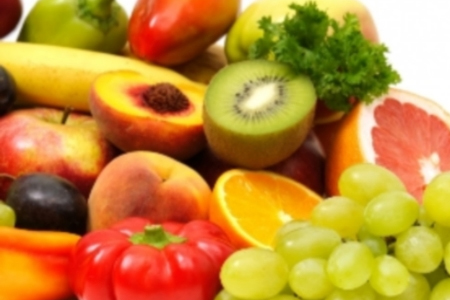Author Archives: Vaidya Jagjit Singh
Tamarind (Tamarindus indica) – Benefits, Medicinal Usage and Properties
- December 28, 2018
- Posted by Vaidya Jagjit Singh
- 0 Comment(s)

PROPERTIES
Unripe tamarind it is bitter and heavy and cures gas formation it cures pitta cough and blood disorders.
RIPE TAMARIND
Promotes digestive functions it is dry and purgative it is hot and cures kapha and vata.
SEEDS
Cure urinary disorders have binding properties enhance and maintain potency.
Paan Patta (Betel Leaves) – Benefits, Medicinal Usage and Properties
- December 28, 2018
- Posted by Vaidya Jagjit Singh
- 0 Comment(s)
The plant is grown in warm and humid regions, especially in areas of Sanchi, Mahoba, Bihar, Orissa, Bengal, Lanka and Malawa’s Rampura-Manpura. Betel of Banaras is considered to be of the best quality.
APPEARANCE
The original climbing vine of betel is very pretty and soft. The stem is strong and thick at the knots. The leaves are big like those of peepal and are heart shaped with veins: they are smooth and thick with a one inch long stem. The flower bunch is spiked. The fruits are 2inch long, muscular and there are many small fruits in axial group hanging down.
Herbal Remedies for Fibromyalgia, Ayurvedic Treatment – Causes & Symptoms
- December 27, 2018
- Posted by Vaidya Jagjit Singh
- 0 Comment(s)
Fibromyalgia is defined as the neurosensory disorder in which there is non inflammatory pain and tenderness in the muscles, ligaments and joints. Although the condition is chronic but the onset of pain is sudden. Pain comes and goes and moves about the body.
CAUSES
- Imbalance in the nervous system
- Building up of toxins and impurities in the body
- Due to stress and depression
- Decreased level of serotonin causes fibromyalgia
- Weakened immune system
Vidarikand (Pueraria tuberosa) – Benefits, Medicinal Usage and Properties
- December 26, 2018
- Posted by Vaidya Jagjit Singh
- 0 Comment(s)
Vidarikand (Pueraria tuberosa) is a creeper which has circular leafless stems. It is commonly found around the canals and rivers and in the lower hills of Himalayas at the height of 3000 ft. Underground fruits are found attached to its roots. Fruits vary in shape and size and its taste is very similar to that of madhuyashti. This is why it is known as swadu kand (tasty fruit). This creeper is favorites to horses and hence is commonly known as gaj vajipriya. Its fresh fruits are sold in the markets as sural. Its another substitute, known as ipomea paniculata is found. When cut, good amount of pungent and sour liquid oozes out of it.
Ayurvedic Treatment of Systemic Lupus Erythematosus (SLE) with Herbal Remedies
- December 24, 2018
- Posted by Vaidya Jagjit Singh
- 0 Comment(s)
Systemic Lupus Erythematosus or SLE is an auto immune disorder which affects many organs particularly the skin, brain, kidneys and joints. In this disorder, the body’s defense system whose primary function is to protect from external attacks of bacteria, viruses conversely attacks the body itself. SLE causes long term inflammation of the affected organs leading to degradation in overall quality of the life.
It is much more common in females as compared to men. It can occur in any age group, but appears more often in people between the ages of 10 and 50. SLE mostly harms to heart, lungs, blood vessels, kidneys, joints, skin, liver and nervous system.
Vasaka (Malabar Nut, Adhatoda Vasica) – Benefits, Medicinal Usage and Properties
- December 22, 2018
- Posted by Vaidya Jagjit Singh
- 0 Comment(s)
In India, Malabar nut (Adhatoda Vasica, Vasaka) plants are found at heights of 1300 to 4000 ft. They grow wild in stony and rocky soil along with other bushes.
APPEARANCE
Its stem is very small and the plant stares growing and spreading just above the ground. Leaves are 3-9 inch long, hariry with edges curling towards each other, pointed at the ends. Flowers are white in cool and blossom in February- march in 4-6 inch long clusters.
PROPERTIES
Malabar nut creates vata. It is very beneficial for voice and cures heart, palpitations, kapha, pitta, blood disorders, thirst, bronchial asthma, cough, fever, vomiting, urinary diseases, dermatoses and tuberculosis.
Ajmod, Celery (Apium Graveolens) – Medicinal Usage & Properties
- December 22, 2018
- Posted by Vaidya Jagjit Singh
- 0 Comment(s)
Celery is grown all over in India, especially in west Bengal at the onset of winter season. It grows very well in the northern and western areas of Himalayas and Punjab. Plants bear flowers in FEB –mar and fruits in mar –Apr After which the plant dies. Celery is known as Ajmoda in Sanskrit. It is a famous Indian spice, used to improve digestion strength. Its leaves, petiole etc are used as vegetable. Its botanical name is Apium grave lens.
APPEARANCE
Celery plants are small herbs like Ajowan. They are 1-3 ft tall. Leaves are separate with graded margins. Flowers are umbrella like in bunches little white flowers grow and change into seeds. They are commonly known as celery seeds.
MEDICINE USAGE & BENEFITS OF AJMOD
Herbs for Natural Treatment of Peptic Ulcer
- December 21, 2018
- Posted by Vaidya Jagjit Singh
- 0 Comment(s)
About Peptic ulcer
Ulcer is a severe condition which can result in severe complications. Therefore, it is necessary to follow the preventive measures for reducing the potential risks. With lifestyle is changing a lot today, a majority of people suffer from ulcers affecting their daily lives. A peptic ulcer (stomach ulcer) is a type of ulcer which occurs mainly in the gastrointestinal tract. The disorder can lead to life-threatening symptoms including cancer which require immediate medical attention. It is erosion formed by bacterial infections that can turn into a dangerous disorder. At the same time, the treatments for the disorders may vary depending on the conditions.
Most physicians recommend a treatment after diagnosing the problems with medical devices. Since peptic ulcer is a serious one, it is necessary to start the treatment as soon as possible for minimizing unwanted problems. Acute peptic ulcers and chronic peptic ulcers are the two types that can appear in humans.
Herbal Remedies for Dyspepsia (Indigestion), Ayurvedic Treatment
- December 19, 2018
- Posted by Vaidya Jagjit Singh
- 0 Comment(s)
Dyspepsia or indigestion is the term used to describe discomfort or pain in the upper abdomen. It is a group of symptoms which include nausea, bloating and burping. When the stomach’s acid comes into the contact with the mucosa of the digestive system, the stomach’s acid breaks down the mucosa causing irritation and inflammation, thus causing dyspepsia.
CAUSES
Main causes of dyspepsia are:
- Overeating
- Eating wrong food combinations
- Eating too rapidly or not chewing the food properly
- Excessive smoking
- Due to intake of alcohol
- Constipation often leads to dyspepsia
- Insomnia or sleeplessness
- Lack of exercise
- Emotions like jealousy, fear and anger
- Eating much spicy food
- Due to suppression of natural urges
Herbal Remedies for Celiac Disease, Ayurvedic Treatment – Causes & Symptoms
- December 19, 2018
- Posted by Vaidya Jagjit Singh
- 0 Comment(s)
Celiac disease is a chronic digestive disorder caused due to damage in the lining of the small intestine. It leads to malabsorption of minerals and nutrients. The destruction of the lining is due to an immunological reaction to gluten. This is generally known as Wheat Allergy as wheat has the highest amount of gluten in it. This type of allergy is seen more in North India as compared to South India due to high consumption of wheat products that contain gluten.
CAUSES
Our body’s immune system is designed in a way that whenever it sees a foreign invader, it releases certain antibodies that protect us from being diseased. But when people with celiac disease eat foods containing gluten, then their immune system regards gluten as a foreign invader and forms antibodies to attack the intestinal lining. This causes inflammation of the intestines and destroys the villi present over there. Villi are hair like structures that are responsible for increasing the rate of absorption of the substances.



















